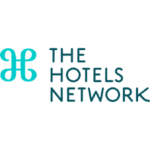 One currently hot topic is rising energy costs. Hotels and hospitality businesses are also affected by this. Due to their size and the amenities they offer to guests, lodging establishments are even more affected by the cost increase than consumers or private households.
One currently hot topic is rising energy costs. Hotels and hospitality businesses are also affected by this. Due to their size and the amenities they offer to guests, lodging establishments are even more affected by the cost increase than consumers or private households.
Hotels try to keep their consumption as low as possible, but of course, guests won’t stay without amenities, which is why costs can’t be reduced to a minimum.
For this reason, some lodging establishments have decided to charge guests an additional energy flat rate.
The flat rate
The energy flat rate is an additional charge that hotels levy on top of the overnight rate per night and person. This is intended to partially offset the additional costs caused by the increased prices and pass them directly to the guests.
It is obvious that such a decision should be well considered. But what are the advantages of levying an energy surcharge and what are the dangers that should be considered when hotels decide to introduce the surcharge?
We investigated this question and found the following points:
Positive aspects of introducing an energy flat rate
- Cost recovery: The hotels are still able to cover their costs if demand remains constant and don’t have to draw on their reserves. This ensures that the hotel remains solvent and can continue to exist in the market.
- Price stability: Due to the openly communicated energy flat rate, the remaining prices can be kept stable. The guest pays the same price for the room as he did a month ago.
- No hidden price increases: Due to the introduction of the energy flat rate, no hidden price increases are necessary.
- Openness towards the guest: The situation is openly explained to the guest. He has a better understanding of the reasons compared with the situation if he only sees a higher price for the overnight stay. This promotes understanding since it is openly communicated to him why he has to pay more.
- Guests become aware of energy consumption: Many guests only become aware of the fact that they also incur ancillary costs when staying in a hotel if the energy flat rate is charged. This awakens the consciousness of the guests that they cannot consume everything with the overnight accommodation price free of charge. One or the other will reconsider and reduce his consumption by this.
There are, therefore, some compelling reasons for introducing an energy surcharge. However, there are also risks associated with levying this surcharge.
Risks
- Declining market attractiveness: The introduction of the flat rate can lead to a decline in market attractiveness. Depending on how the surcharge is presented, the price of the overnight stay may appear to be significantly higher than that of the competitor, which is why some customers will now decide to book with the competitor.
- Decreasing demand: Due to the increased price, it may happen that the demand decreases and if the occupancy is too low, the costs can no longer be covered despite the energy flat rate.
- Discounts & promotions to keep demand: Due to the higher prices and the resulting top two points, you may have to rely on discounts & promotions to maintain demand and continue to generate sufficient bookings. These discounts are applied to the room rates, which is why you run the risk of selling the rooms at too low a base price now. As a result, the other costs may no longer be covered, and there is a risk of financial problems and losses despite the energy flat rate.
- Increasing energy consumption: There is still a risk that guests will now increase their energy consumption. Since guests now pay separately for this service, there is a risk of the attitude: “After all, I have paid for this service, so I can use it to a great extent!”
In order to keep the dangers as low as possible and to be able to take advantage of the benefits, the following points should definitely be taken into account.
Take into account
- Legal requirements: Before introducing an energy flat rate, all legal regulations and requirements should be checked and should be considered accordingly. In Germany, we recommend following the official advice from DEHOGA.
- Open communication with guests: Only if the levying of the flat rate is obviously communicated and presented to the guest, he will be able to understand it. There is hardly anything more negative for guests than hidden costs and unexpected surcharges.
- Inform guests in advance: The guest should be informed of the surcharge at the time of booking. When completing the reservation process, he or she should be shown the total price with an energy flat rate.
- Give reasons and explain to the guest: It is always helpful to openly present the current situation to the guests and tell them the reasons for the introduction. This increases the guests’ understanding.
Ultimately
The decision is up to each individual hotel. There is no perfect way you can go. In addition to the aspects shown, many other individual conditions play an important role. However, it is definitely a topic that many hotels are currently confronted with, and have to find the best solution for themselves.
Co-authored by




























